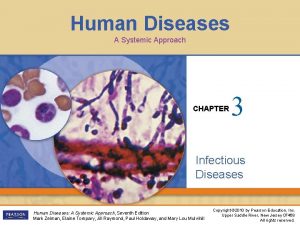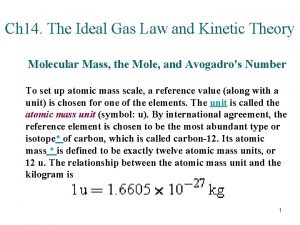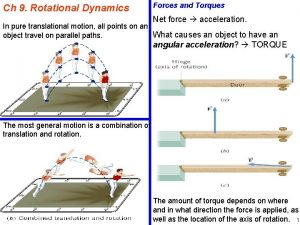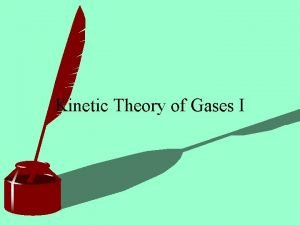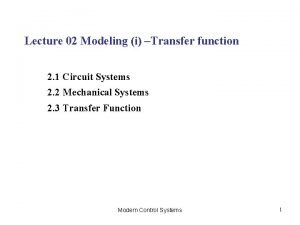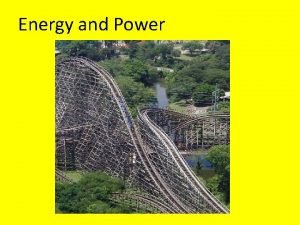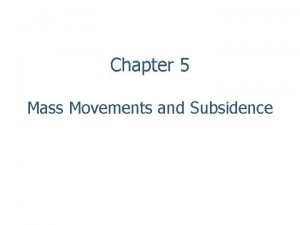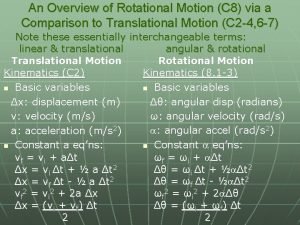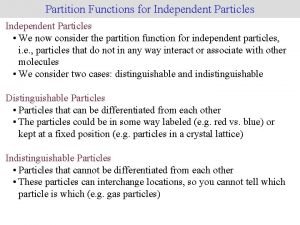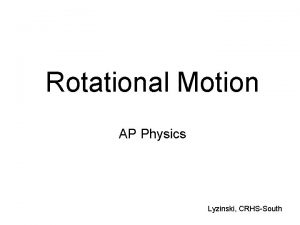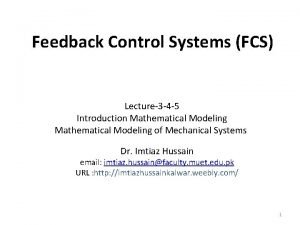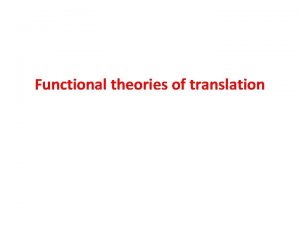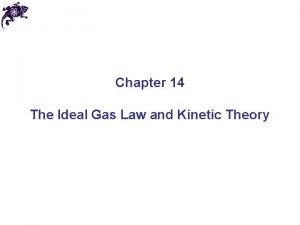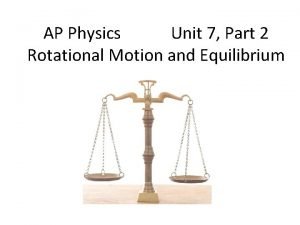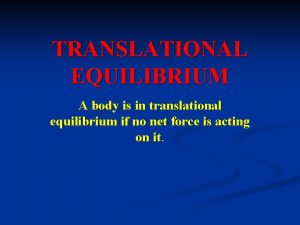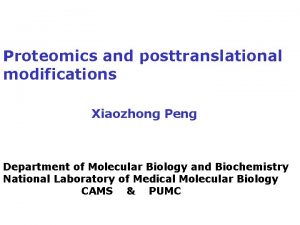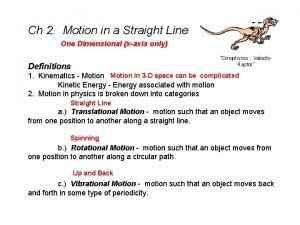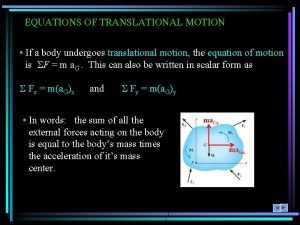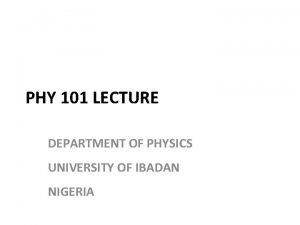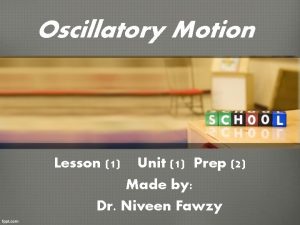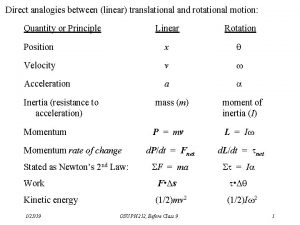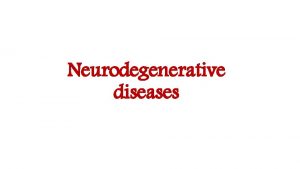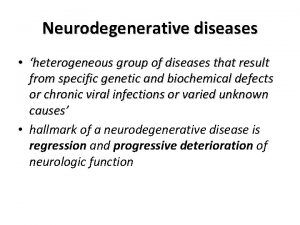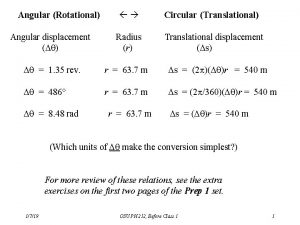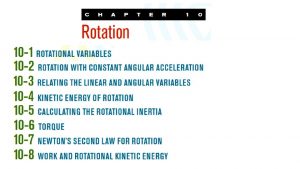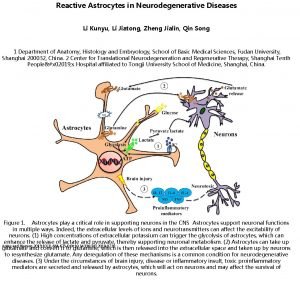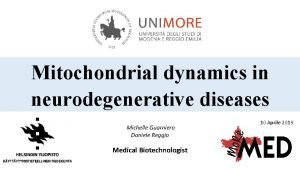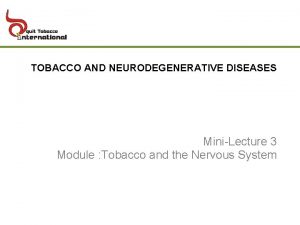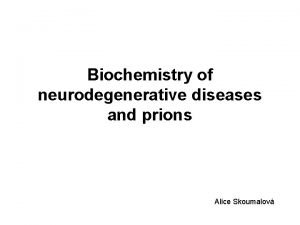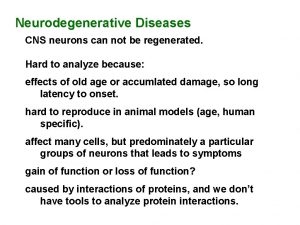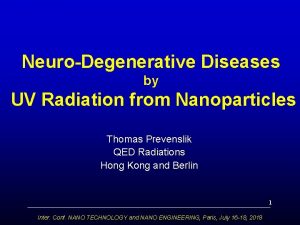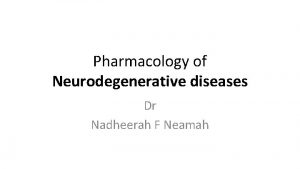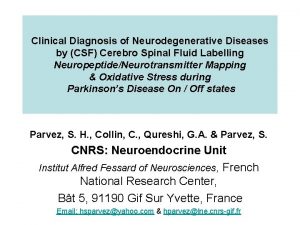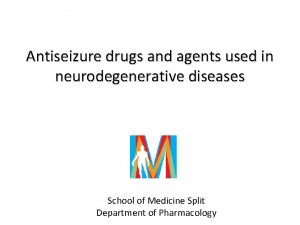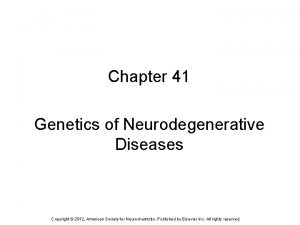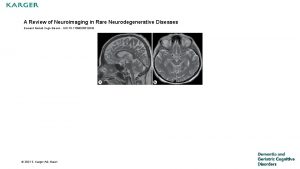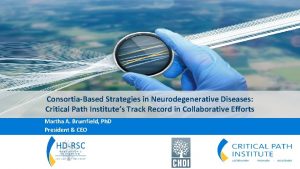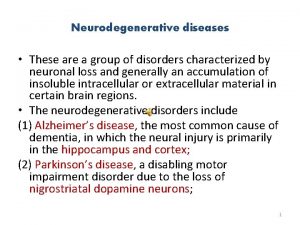A novel translational approach for neurodegenerative Diseases e




































































































- Slides: 100

A novel translational approach for neurodegenerative Diseases (e. g. AD, ALS, PD) Harish c. Pant NINDS/NIH, Bethesda, MD International Conference on Brain Disorders & Therapeutics, August 24 -26, 2015, London UK

In mature neurons cytoskeletal protein phosphorylation is topographically & tightly regulated under physiological conditions. (S/T-P) 40 - >100 (Ser) S/T (Thr)-P Tau N C 12 - 24 (S/T-P) Topographic regulation of cytoskeletal protein phosphorylation MAPs ALS Normal Human cervical spinal neuron

Cdk 5, Cyclin dependent kinase 5, A neuron specific Cdk; While studying the compartment specific phosphorylation of neuronal cytoskelelal proteins on proline-directed serine (Ser)/threonine (Thr) residues, we discovered cyclin- dependent kinase 5, (Cdk 5), is the major kinase involved in the regulation of phosphorylation in the nervous system. Cdk 5 is a multifunctional kinase , essential for neuronal survival and plays a key role in the nervous system development, maturation of mammalian nervous system and neurodegeneration.

• Cdk 5 is unique among the Cdk family of kinases; it is not activated by a cyclin, although it binds with cyclin D/E • Activity is found primarily in neurons due to its association with neuron specific molecules p 35 and p 39. • p 35 is the major activator. Cdk 5 is the major kinase phosphorylating S/T-P residues in the nervous tissue

Cdk 5 Cyclin dependent kinase 5 (Cdk 5): Yin & Yang of the Nervous System

Cdk 5; in vivo and in vitro studies; Activity is Spatially and Topographically regulated Cdk 5 (-/-) mice, * Embryonically lethal ( E 16. 5 - P 0), wide spread defects in neuronal migration in cortex, hippocampus and cerebellum. * Ballooned neuronal perikarya of spinal cord and brain stem motor neurons. * Aberrant phosphorylation of cytoskeletal proteins and apoptosis. * Higher MAPks ( Erk 1/2), SAPKs ( JNK 3) and reduced lipid kinases ( PI 3 K) activity (Cdk 5 - cross talk). These studies suggest that Cdk 5 modulates various signal transduction pathways, tightly regulating neuronal function & survival.

Role of Cdk 5 in neurophysiology and pathology Physiology Pathology upon neuronal insults / stress (e. g. Aβ, Glutamate toxicity, oxidative stress, glucose toxicity, mutations) N N Ca 2+ influx p 35 Calpain Cdk 5 Physiology; p 35 Intracellular Ca 2+ Cdk 5 Neuronal processes regulated by Cdk 5 Neuronal development and migration, Axonal Transport Phosphorylation of cytoskeletal proteins Kinase cross-talk Cognition and memory Synaptic Plasticity Neuronal survival Cell Adhesion Exocytosis Pain Inflammation Deregulation p 25 Pathology ( e. g. AD, ALS); Cdk 5/p 25 is a therapeutic target Cdk 5 Deregulated Cdk 5 activity; elevated & sustained activation. Neuroinflammation - Neurodegeneration; AD , ALS, FTD, PD, HD, N-PC Pathology

Crystal structure of the Cdk 5/p 25 complex with roscovitine Tarricone et al. , 2001; Mapeli et al. , 2005 Small lobe Glycine rich loop, ATP Bi nding Domain roscovitin e PSTAIRE Activation loop Km (p 25): 70 -100 n. M Km (ATP): 300 M Large lobe

What is the effect of smaller peptides derived from P 25 fragment Protein? Can these smaller peptides derived from p 25 deregulator, more devastating or rescue the deregulated Cdk 5 activity inducing apoptosis?

Cdk 5/p 25 a therapeutic target; Roscovitine like compounds (ATP analogs) are non specific and toxic; We used truncated peptides derived from p 25 within 3. 5 A interface (using Cdk 5/p 25 crystal structure) to study the role of these peptides on Cdk 5 activity. To our surprise some of them inhibited Cdk 5 activity. 209 aa P 25 Ki 142 aa > 5µM P 15 136 aa ~ 2µM P 14 CIP P 1 P 2 P 3 P 4 P 5 126 aa ++ 57 aa + 47 aa ++ 41 aa 29 aa 24 aa +++ ++ +++ 40 n. M 20 n. M Zheng et al. , JBC 2010, EMBO J 2005

Modified p 5 – To pass BBB named as TFP 5 p 5 (24 aa): KEAFWDRCLSVINLMSSKMLQINA Modified TAT-peptide TFP 5: FITC-GGGKEAFWDRCLSVINLMSSKMLQINA p 5 Scrambled peptide: FITC-GGGGGGFWDRCLSGKGKMSSKGGGINAYARAARR TFP 5 US Patent # 8597660.

TFPP 5 -modified peptide is a better inhibitor of Cdk 5/p 25 activitycompared to Roscovitine 140 32 P CPM (x 1000) 120 100 80 60 40 P 5 -mod. Roscovitine 20 0 Cdk 5/p 25 5 10 5 Concentration (µM) 10

A Kinase Assay using cortical neurons with Cdk 5 IP 32 P-histone H 1 -Coommassie stain * 40 Kinase Assay ( mean density) B 30 20 10 0 EV p 25 TFP 5 p 25+TFP 5 modified peptide inhibits specifically Cdk 5/p 25 but not endogenous Cdk 5/p 35 activity in situ - neuronal cultures

A Kinase Assay using cortical neurons with Cdk 5 IP 32 P-histone H 1 -Coommassie stain * 40 Kinase Assay ( mean density) B 30 20 10 0 EV p 25 TFP 5 p 25+TFP 5 modified peptide inhibits specifically Cdk 5/p 25 but not endogenous Cdk 5/p 35 activity in situ - neuronal cultures

TFP 5 inhibits Aβ induced toxicity in cortical neurons

Mouse Cerebral Cortex- Single injection, TFP 5 40 mg/Kg 4 days post injection PBS A TFP 5 C 10 X PBS/DAPI B TFP 5/DAPI D TFP 5 Crosses the Blood Brain Barrier 40 X

P 5 - modified peptide distribution in various regions at day 4 after 3 consecutive ip injections IP injection of TFP 5 crosses the blood brain barrier and localized in different parts of brain

Sporadic AD model mouse; p 25 Tg p 25 Pathology; Cdk 5/p 25 is a therapeutic target Cdk 5 Deregulated Cdk 5 hyperactivity; elevated & sustained activation. Neurodegeneration; AD , ALS and others Pathology

p 25 Transgenic mice- ADmousemodelin collaborationwith. Drs Tsai and. Kesavapany’s laboratories C 57 BL/6 -Tg(tet. O-p 25/GFP) Thep 25 transgenicmiceexpressing the p 25 proteinbearing acarboxy-terminal GFPtag, underthe control of the tetracycline operator B 6; CBA-Tg( Camk 2 a-t. TA) Thecamk 2 atransgenicmiceexpressing the tetracycline-controlledtransactivatorprotein (t. TA) underregulatory control ofthe forebrain-specific Camk 2 apromoter Bi-Tg(tet. O-p 25/GFP/Camk 2 a-t. TA) Induction of p 25 expression at the ageof 6 wkby the removal of doxycycline inwater

Phenotypic expression of p 25 Tg AD model mouse include: • p 25 expression • Cdk 5 Hyperactivity • Aβ plaques, Amyloid plaques • hyperphosphorylation and aggregation of Tau, NFTs and NFPs • Neuroinflammation (activated astrocytes and microglia) • behavioral defects

Can TFP 5 treatment prevent AD phenotypes in sporadic AD model (p 25 Tg) mice? . A Proof of concept.

Can TFP 5 reduce the AD phenotypes in P 25 Tg. AD model mice? Five groups of mice were injected either with saline, TFP 5 or scrambled peptidestarting after 12 weeks on DOX followed by 6 wks off DOX during which the AD phenotypes are expressed. For six weeks, all injections were given 3 times every week i. e. , 18 injections in total. After treatment, Y maze and rota-rod and other behavioral studies were carried out before animals were sacrificed for biochemical and cell biological analyses. All the behavioral studies are double blinded.

Hyperactivation of Cdk 5 is reduced significantly upon TFP 5 treatment Cdk 5 Kinase Assay TFP 5 peptide treatment rescues hyperactivation of Cdk 5 in P 25 Tg AD model mice.

TFP 5 treatmentrescued synaptic activity in P 25 Tg AD model mice; To record field excitatory postsynaptic long term potentials (e. LTP), synaptic activity marker of memory and learning measured using transverse hippocampal slices prepared from five different groups of mice (1) WT controls, (2) p 25 non- expressing, (3) p 25 over expressing ( p 25 Tg, AD model), (4) p 25 Tg mice treated with TFP 5 and (5) p 25 Tg mice treated with scrambled TFP 5. CA 1 field potentials evoked by Schaffer collateral stimulation were measured. After recording of stable baseline , LTP was induced by two episodes of theta burst stimulation (TBS) with 10 s intervals. TBS consisted of ten bursts (each with four pulses at 100 Hz) of stimuli delivered every 200 ms

p 25 -mediated synaptic dysfunction rescued in CK-p 25 expressing mice post TFP 5 administration; loss of synatic activity (e. LTP)is preventedin FTP 5 treated p 25 Tg AD model mice.

Spatial memory (Y- Maze) deficit is rescued in p 25 Tg TFP 5 injections p 25 Tg 12 weeks on DOX 70 thrice TFP 5 0. 2 m. M / week 6 weeks off DOX ٭٭٭ % Alternation 65 60 55 50 45 40 ٭ ٭ ٭ Significant Rescue

TFP 5 treatment prevented motor defectsin p 25 Tg AD model mice Rota rod: Motor deficit

Hyperphosphorylation of cytoskeletal proteins and neuroinflammation is reduced upon TFP 5 treatment Neuroinflammation. TFP 5 treatment reduced hyperphosphorylation of treatment reduced in p 25 Tg p-neurofilament (p-NF-H/M) and p-tau in p 25 Tg AD model mice

Does TFP 5 prevent hyperactivation of Cdk 5 and abnormal phenotypes in double transgenic familial (5 XFAD) AD model mice? 5 XFAD mouse has the following five familial Alzheimer Disease (FAD) mutations: Three APP (695) mutations: • Swedish (K 670 N/ M 671 L) • Florida (I 716 V) • London (V 717 I) Two Presenilin l (PS 1) mutations: • M 146 L • L 286 V Phenotypic expression of 5 XFAD mouse include: • p 25 expression • Cdk 5 Hyperactivity • Aβ plaques, Amyloid plaques • hyperphosphorylation and aggregation of Tau, NFTs and NFPs • Neuroinflammation (activated astrocytes and microglia) • behavioral defects

TFP 5 peptide prevents hyperactivation of Cdk 5 in 5 XFAD mouse brain

Rescue of spatial memory deficit by TFP 5 treatment in AD model mice: Y-maze Spontaneous Alternation Test ( memory). Spontaneous alternation behavior (SAB) % = (working memory) 70 % Alternation 65 3 months n =3 6 months n =8 * Total number of triad entry X 100 Total number of arm entry - 2 Hsiao et al. , Science (1996) Holocomb et al. , Nature (1998) 9 months n =11 12 months n =10 * * 60 55 50 45 40 All the behavioral studies were double blinded.

TFP 5 injection rescued motor deficit in 12 month old 5 XFAD model mice (Rota-rod test, motor behavior ) 200 6 months 12 months 9 months Latency (sec) 160 ** 120 * 80 40 WT 5 XFAD+TFP 5

Aβ and phospho-tau were reduced post TFP 5 treatment Aβ plaques Phospho-tau

Neuroinflammation is reducedupon TFP 5 treatment WT 5 XFAD+TFP 5 GFAP H Activated astrocytes Relative intensity 50 E WT OX 42/DAPI F 30 20 10 0 G WT 5 XFAD 5 X+TFP 5 5 XFAD L Relative intensity 20 I ٭٭٭ 40 Activated microglia ٭٭٭ 10 0 J K WT 5 XFAD 5 X+TFP 5

P 5 -mod treatment inhibits hyperphosphorylation of NF-M/H and Tau of 5 XFAD mice brain ; Western blots and ICC using p-NF-M/H and p-tau specific antibodies I J

Neuronal cell loss is reduced upon P 5 -modified peptide treatment of AD mice Cleaved caspase 3 (apoptotic cell marker) WT 5 XFAD+P 5 -mod CC 3/DAPI CC 3 positive cells 30 A B C Apoptotic cells ٭٭٭ 20 ٭ 10 0 WT 5 XFAD 5 X+TFP 5

Since it is well documented that deregulation of Cdk 5 activity is associated with ALS pathology, and expression of p 25 and Cdk 5 hyperactivity have been demonstrated in ALS brain and spinal cords (Nguyen et al. , 2001; Cruz et al. , 2004 ), we asked the following question: Can TFP 5 ameliorate ALS pathology?

Cdk 5 activity is elevated brain and spinal cord of. ALS patients

TFP 5 Injection paradigms for ALS mice Slow ALS (SOD 1 G 37 R) • Onset 140 -150 days • End stage 170 days • G 37 R (line 42) mice treated with TFP 5 (0. 4 m. M)/ once a week starting from 80 days carried out till the end stage of mice ( criteria set by Vet. ) 80 days were chosen to make sure that injections are given well before the onset of the disease. We also did 0. 2 m. M one injection per week which did not show any rescue. Fast ALS (SOD 1 G 93 A) • Onset 100 -110 days • End stage 130 days • G 93 A mice treated with TFP 5 (0. 4 m. M)/twice a week starting from 35 days carried out till the end stage of mice ( Criteria by Vet. ) 35 days were chosen to make sure that injections are given well before the onset of the disease. We also did one injection per week which was not effective. Therefore changed to two injections per week.

Survival plot of G 37 R (line 42) mice treated with TFP 5 (0. 4 m. M ; 100 mg/kg)/ once a week starting from 80 days Survival Plot G 37 R survival = 160 days ± 5 G 37 R-T survival = 175 days ± 3. 5 Survival increased by 15 days

Survival plot of G 93 A mice treated with TFP 5 (0. 4 m. M)/twice a week starting from 35 days G 93 A survival = 117 days ± 1 G 93 A-T survival = 134. 6 days ± 2. 5 Survival increased by 17. 5 days

Elevated Cdk 5 activity of G 37 R ALS model mice brain reduced to wild type activity upon TFP 5 treatment Reduction in phospho - NF and p. Tau after TFP 5 treatment in G 37 R mice 245 180 100 75 63 48 W M M +T Neuroinflammation is reduced post TFP 5 treatment in G 37 R mice 48 GFAP 20 17 Iba-1 Smi 31 AT 8 Actin 75 CD 86

TFP 5 can ameliorate ALS phenotypes in SOD 1 mutant mice

Longer preincubation facilitates TFP-5 mediated neuroprotection in cells treated with 3 NP (mitochondrial electron transport complex 1) Rat Cortical Neurons 24 h preincubation with TFP-5 Then 24 h exposure to 3 -NP Rat cortical neurons 1 h preincubation with TFP-5 24 h exposure to 3 -NP p<0. 001 MTT Cell Viability Absorbance p<0. 001 0. 3 0. 4 0. 3 0. 2 0. 1 0. 0 ia ed M 3 M m P N 3 - + 10 n. M 5 PF T P N 3 - + 0 10 n. M 5 PF T P N 3 - + 1 u. M 5 PF T


Cdk 5 deregulation in Parkinsion’s Disease (PD) Recent evidence indicates that Cdk 5 is also hyperactivated in PD. Following few experiments show that TFP 5 or TP 5 also inhibit Cdk 5 hyperactivation in vivo and in vitro, rescues nigrostriatal dopaminergic (NS) neurodegeneration induced by 1 -methyl- 4 -phenyl-1, 2, 3, 6 -tetrahydropyridine (MPTP/MPP+), in a mouse model of PD. TFP 5 peptide treatment also blocked dopamine depletion in the striatum and improved gait dysfunction due to MPTP administration. The neuroprotective effect of TFP 5 peptide is also associated with marked reduction in neuroinflammation and apoptosis.

TFP 5 inhibits MPTP-induced Cdk 5/p 25 hyperactivity in PD model mice

Dopaminergic neuronal loss in SN due to MPTP is reduced significantly by TP 5 treatment

TFP 5 treatment inhibits MPP+ -induced inflammation and apoptosis in mesencephalic primary cultures

Dopaminergic neurons of the SN express Cdk 5/p 35 and are protected from cell death by TP 5 after MPTP induction

TP 5 treatment improves significantly the Locomotor Function in MPTP exposed Mice

Conclusion TFP 5 provides neuroprotection in the 1 -methyl- 4 -phenyl-1, 2, 3, 6 tetrahydropyridine (MPTP) model of Parkinson's disease mice.

TFP 5 – A therapeutic candidate Passes through BBB due to modified TAT attached. Can be visualized due to FITC. Does not cause toxicity in the mouse even at the concentration of >2000 mg/Kg. No neurological stress observed post TFP 5 injections. No change in the body weight before and after injections. Rescues following AD phenotypes: Specifically inhibits Cdk 5/p 25 hyperactivity Rescues spatial memory deficit Reduces p-tau, p-NF aggregates and beta-amyloid plaques Reduces neuroinflammation and apoptosis

Summary A 24 amino acid, modified peptide (TFP 5), reduced / prevented AD phenotypes in familial 5 XFAD model mice upon ip injection of TFP 5 treatment also reduced AD phenotypes in p 25 Tg AD model mice, proof of concept. On going studies are also providing the evevience that TFP 5 can ameliorate PD and ALS pathologies in Model mice.

Summary: TFP 5 selectively inhibits the deregulated Cdk 5/p 25 but not Cdk 5/p 35, the regulated, normal activity in situ & in vivo , ameliorate pathology. Pathology upon neuronal insults Physiology Ca 2+ influx p 67 Cdk 5 Regulated Cdk 5 activity Neuronal development and migration Phosphorylation of cytoskeletal proteins Kinase cross-talk Cognition and memory Synaptic Plasticity Neuronal survival Cell Adhesion Exocytosis MT Calpain p 35 Recovery N N MT TFP 5 N TFP 5 p 67 p 35 Intracellular Ca 2+ TFP 5 Cdk 5 p 25 Cdk 5 Deregulated Cdk 5 activity Aberrant hyperphosphorylation of cytoskeletal proteins (NF, tau and MT) Neurodegeneration/Pathology MT TFP 5 p 25 Cdk 5 Inhibition of hyperactivity Regulated Cdk 5 activity

In p 25 Tg mice neuroinflammation occurs before Aβ and p. Tau expression ; (Sundaram JR et al. ; J. Neurosci 32, 1020 -34, 2012). On the basis of these studies we propose Cdk 5/p 25 acts like a double edged sword in neuropathology.

Hypothesis Deregulated Cdk 5 activity acts like a double edged sword in neuropathology Neuronal insults (e. g. Aβ, Glutamate toxicity, oxidative stress, Mutations (e. g. SOD 1), neuroinflammation) N H Hyd rolyses membrane phospholipids P Ca 2+ c. PLA 2 active 5 -Lipo Eicosanoids p 35 Calpain Arachidonic Acid Cox Higher phosphorylation of c. PLA 2 by Cdk 5/p 25 compared to Cdk 5/p 35 Ca 2+ influx Leukotrienes Cdk 5 Intracellular Ca 2+ c. PLA 2 active Cytokines, chemokines , LPC & other production. p 25 Cdk 5 Deregulated Cdk 5 activity; elevated & sustained activation. Activation of receptors Activation of glia and microglia Neuroinflammation Neurodegeneration; AD, ALS, FTD, PD, HD, N-PC

CPR-NINDS laboratory, NINDS, NIH Colleagues N. Amin P. Grant V. Shukla Binu Kumar Susan Kuntz Joe Steiner M. Bhaskar Collaborators Y. Zheng, Department of Nephrology, Ningxia People’s Hospital, Province, China S. Kesavapany GSK, Singapore L. H. Tsai, , J. Soe MIT, Boston

Thank You

WT mouse : single i. p 40 mg/kg wt (0. 2 m. M) After 4 th and 7 thday, TFP 5 was observed in the following regions: (12µm thick frozen sections) Regions Relative expression Day 4 Day 7 Brain: Cortex Hippocampus Cerebellum ++++ +++ ++ + Pancreas ++++ Kidney Heart Liver +++ ++ + -

TP 5 suppresses MPTP-induced astroglial and microglial activation in the SN in vivo

Dopaminergic neurons of the SN express Cdk 5/p 35 and are protected from cell death by TP 5 after MPTP induction

Apoptosis is prevented in SN neurons of PD model mice( in vivo studies) upon TFP 5 treatment

Elevated Cdk 5 activity of G 37 R ALS model mice brain reduced to wild type activity upon TFP 5 treatment Reduction in phospho - NF and p. Tau after TFP 5 treatment in G 37 R mice 245 180 100 75 63 48 W M M +T Neuroinflammation is reduced post TFP 5 treatment in G 37 R mice 48 GFAP 20 17 Iba-1 Smi 31 AT 8 Actin 75 CD 86

A be 20 M e u M dia 20 ta A A be be Ab + 1 u et ta M ta a + TF + 4 20 P 5 20 0 n 40 A n M A be be T M ta t a at Tat + + 18 + 1 TF 8 0 P n. M 0 n 5 10 M A 10 T be A Ta ta b e t + at ta TF + 1 u + P M 1 u 5 M Ta Ta t t + TF P 5 20 Neuronal Cell Count TFP-5 prevents neuronal cell loss in Abeta/Tat treated neurons Neuronal cell count 48 h post treatment 5000 4000 p<0. 0001 p<0. 001 3000 2000 1000 0


Selectivity of TFP 5 In situ and in vivo Cdk 5 exists as a multimeric complex , with cytoskeletal and synaptic proteins.

Cdk 5 associates with p 67 ( Munc/18) and elevates its activity

p 67 ( Munc 18/ n-sec 1); P 67 affects Cdk 5/p 35 but not Cdk 5/p 25 activity *** P 67 binds with Cdk 5/p 35 but not Cdk 5/p 25

Cdk 5/p 35 in multimeric complex associated with cytoskeletal and synaptic proteins in situ & in vivo Rat brain lysate was immunoprecipitated (IP) with p 67 (Munc 18) antibody and then immunodetected with Western blot (WB) analysis using respective antibodies as shown

Cdk 5/p 35 activity in cortical neurons transfected with p 67 si. RNA is inhibited by TFP 5 The expression of p 67 was “knocked down” in cortical neurons transfected with p 67 si. RNA (upper panel, lane 4 -6); however, p 35 and Cdk 5 expressions were unaffected (two middle panels). B: The Cdk 5 kinase activity in the cells transfected with p 67 si. RNA and treated with TFP 5 was inhibited (lane 5), C: The bar graph shows the mean density of autoradiographs of the Cdk 5 kinase activity. The results represent the values of three experiments. * p<0. 01.

Only Cdk 5/p 25 activity is inhibited by TP 5 in HEK 293 cells overexpressing Cdk 5/p 35 or Cdk 5/p 25. p 35 interaction with macromolecules (e. g, microtubules) spares Cdk 5/p 35 activity. HEK 293 cells over expressing p 35/Cdk 5 or p 25/Cdk 5 were treated with different concentrations of the TFP 5. p 35/Cdk 5 kinase activities (lane 2 -5) were unaffected; p 25/Cdk 5 kinase activities , however, were inhibited (lane 6 -9). B. The bar graph quantitates the results. Standard errors are shown for three experiments* p<0. 01

Summary: CIP and or TFP 5 selectively inhibits the deregulated Cdk 5/p 25 but not Cdk 5/p 35, the regulated, normal activity in the presence of cytoskeletal and or synaptic proteins. Pathology upon neuronal insults Physiology TFP 5 Recovery N N Ca 2+ influx MT p 67 Calpain p 35 Cdk 5 Regulated Cdk 5 activity Neuronal development and migration Phosphorylation of cytoskeletal proteins Kinase cross-talk Cognition and memory Synaptic Plasticity Neuronal survival Cell Adhesion Exocytosis MT N TFP 5 p 67 p 35 Intracellular Ca 2+ TFP 5 Cdk 5 p 25 Cdk 5 Deregulated Cdk 5 activity Aberrant hyperphosphorylation of cytoskeletal proteins (NF, tau and MT) Neurodegeneration/Pathology MT TFP 5 p 25 Cdk 5 Inhibition of hyperactivity Regulated Cdk 5 activity

Proposed molecular model; p 5/TFP 5 competes with p 25 and inhibits Cdk 5 deregulated activity Approximate position of p 5 peptide in the inactive Cdk 5 (Cdk 2 homology structure) Position of p 5 peptide in Cdk 5/p 25 crystal (1 H 4 L) Tarricone et al. , 2001; Mapeli et al. , 2005 P 5 S 159 PSSALRE Inactive Computational Molecular Modeling Active Km (p 25): 70 -100 n. M Ki (p 5): 20 n. M


TFP-5 attenuates neuronal fragmentation following Ab/Tat treatment for 48 h Degenerating Neuronal puncta Neurona Cell Puncta 48 h post Tx 1500 p<0. 0001 1000 500 0 5 t t t ia ta 5 5 Ta FP 5 Ta TFP ed be FP T n. M M M A M + T + 0 n t + T 1 u M t u. M 1 u 40 Ta 18 Ta ta + Tat + 20 + + n. M Abe u. M ta eta n. M ta e e 1 0 b A 0 A + 4 Ab 18 10 a + t 2 a 20 a + 20 et be t e b A A 10 0 2

Media/Saline Media/1 M TFP-5 III Tubulin-td. Tomato expressing neurons TFP-5 20 M A + 1 M TFP-5

TFP 5 Reduces significantly ALS phenotypes in SOD 1 mutant mice; A potential therapeutic candidate for ALS

Conclusion: TFP 5 treatment prevents / reduces AD phenotypes in P 25 & 5 XFAD Tg, familial and p 25 Tg sparodic AD model mice and can be a therapeutic candidate for AD pathology.

The higher levels of p 25 expression ( Cdk 5 deregulation & hyperactivation) in this sporadic AD model mice induces robust expression of inflammation/neurodegeneration. To understand the progression of neuroinflammation , it is important to study the early time course of expression of inflammatory factors in p 25 Tg mice which will provide a better understanding of the onset of pathology.

Unlike MAKPs ( e. g. Erk 1/2), Cdk 5 activity depends upon the nature of the amino acid residue following the proline

Kinetic Mechanisms (unique to Cdk 5) • • • 1. 2. Cdk 5 has also very high affinity for its activators Km (activator): 70 -100 n. M • • CDK 5/p 35 has higher affinity for substrate peptides/proteins compared to ATP Km (ATP) =300 M Km (peptide) =100 M Therefore, the enzyme kinetics can be explained with a two substrate binding model for CDK 5/p 35 activation. First, with peptides/proteins, then second ATP. 3. CDK 5 has an order of magnitude lower affinity for ATP compared to other kinases CDK 5, Km (ATP): 300 - Other kinases Km (ATP): 10 -20 M • 4. Consensus sequence X-S/TP-K/R-X; X, neutral or basic amino acid

Kinase Activity Regulation and Deregulation of Cdk’s activity Proteolytic Cleavage Cycling Cdks P 34 Cdc 2 p 25/Cdk 5 p 35/Cdk 5 Physiological processes Pathological processes

Structural basis of Cdk 5 activation by p 35/p 25 Tarricone et al. , Molecular cell, 2001

P 5 is a better inhibitor than CIP P 5

Kinetic Mechanisms (unique to Cdk 5) • • • 1. CDK 5/p 35 has higher affinity for substrate peptides/proteins compared to ATP Km (ATP) =300 M Km (peptide) =100 M 2. Therefore, the enzyme kinetics can be explained with a two substrate binding model for CDK 5/p 35 activation. First, with peptides/proteins then ATP. • • • CDK 5 has also very high affinity for its activators Km (activator): 70 -100 n. M (p 35) 3. CDK 5 has an order of magnitude lower affinity for ATP compared to other kinases CDK 5, Km (ATP): 300 M Other kinases Km (ATP): 10 -20 M

In mature neurons cytoskeletal protein phosphorylation is topographically & tightly regulated under physiological conditions. Human cervical spinal neuron Control Normal ALS

To record field excitatory postsynaptic potentials, transverse hippocampal slices were prepared from mice. In brief, the brain was rapidly removed and transferred to ice-cold, oxygenated (95 % O 2 and 5 % CO 2) cutting solution containing (m. M) 211 sucrose, 3. 3 KCl, 1. 3 Na. H 2 PO 4, 0. 5 Ca. Cl 2, 10 Mg. Cl 2, 26 Na. HCO 3 and 11 glucose. Hippocampal slices were cut with a Leica VT 1000 S vibratome (Leica) and transferred for recovery to a holding chamber containing oxygenated artificial cerebrospinal fluid (ACSF) consisted of (m. M) 124 Na. Cl, 3. 3 KCl, 1. 3 Na. H 2 PO 4, 2. 5 Ca. Cl 2, 1. 5 Mg. Cl 2, 26 Na. HCO 3 and 11 glucose at 28 -30 °C for at least 1 h before recording. CA 1 field potentials evoked by Schaffer collateral stimulation were measured. After recording of stable baseline (at least 20 min of stable responses), LTP was induced by two episodes of theta burst stimulation (TBS) with 10 s intervals. TBS consisted of ten bursts (each with four pulses at 100 Hz) of stimuli delivered every 200 ms. Recordings were performed using an AM-1800 Microelectrode amplifier (A-M systems) and a Digidata 1440 A A-D converter (Axon Instruments). All data were digitized analyzed by the use of p. Clamp 10 software (Axon Instruments). Sample traces represent f. EPSPs at 1 min before (gray trace) and 1 hr after (black trace) TBS. Bar graph : average slopes of f. EPSP during the last 10 min of recording (percentage of baseline response) Control (p 25 only - Dox off) : 160. 6 ± 6. 1 %, 6 slices from 4 mice CK-p 25 + PBS : 125. 2 ± 3. 7 %, 5 slices from 3 mice CK-p 25 + SC : 137. 5 ± 6. 2 %, 7 slices from 4 mice CK-p 25 + TFP 5 : 165. 7 ± 9. 0 %, 6 slices from 4 mice

High glucose induces p 25 expression and hyper activates Cdk 5 activity in A cortical neurons, a time course study

Cdk 5 hyper activity and tau hyper phosphorylation induced by high glucose is inhibited by TFP 5 pretreatment in cortical neurons. A B

Pre-treatment with TFP 5 rescues glucotoxic cortical neurons from oxidative stress due to increased ROS production and decreased antioxidant capacity. TFP 5 behaves like antioxidant

TFP 5 reduces increased production of inflammatory cytokines induced by high glucose in cultures of primary cortical neurons; scrambled peptide has no effect A B TFP 5 as a anti inflammatory agent

TFP 5 protects neuronal loss due to HG toxicity. TFP 5 is anti apoptotic

Modified p 5 – To pass BBB as TFP 5 p 5 (24 aa): KEAFWDRCLSVINLMSSKMLQINA Modified HIV-TAT-peptide TFP 5: FITC-GGGKEAFWDRCLSVINLMSSKMLQINA p 5 Scrambled peptide: FITC-GGGGGGFWDRCLSGKGKMSSKGGGINAYARAARR TFP 5 US Patent # 8597660.


Summary • Cdk 5 activity is tightly regulated in the nervous system, its regulation and deregulation correlates with cytoskeleton phosphorylation and neurophysiology and pathology. • Cdk 5 is involved regulation of signal transduction pathways implicated in neuronal survival. • Deregulation of Cdk 5 activity causes neuronal cell death. • CIP, a truncated peptide from p 25, specifically inhibits Cdk 5 deregulation, aberrant tau hyperphosphorylation and induces neuronal survival without affecting normal activity of cdk 5 ( Cdk 5/p 35). • P 5, ( 24 aa) a truncated peptide from CIP inhibits cdk 5/p 25 activity.

P 5 -mod reduced pathological hallmarks of AD in cortex: Hyperphosphorylation of aggregated & tangled Tau (AT 8)& Alz 50

HEK 293 cells transfected with Cdk 5/p 35 or Cdk 5/p 25 in the presence or absence of TFP 5 and binding with Cdk 5 of p 35 and p 25 is evaluated using Cdk 5 antibody IP: Cdk 5 (J-3) Lysate 1 2 3 4 5 6 7 8 9 1 2 3 4 5 6 7 8 35 25 p 35 Cdk 5 43 Actin 250 225 mean density 1. EV 2. EV+TFP 5 3. P 35 4. P 35+ SCB 5. P 35+ TFP 5 6. P 25 7. P 25+SCB 8. P 25+TFP 5 9. P 25 (lysate, positive control) 200 175 150 125 100 75 TFP 5 competes with p 25/cdk 5 but not with p 35/Cdk 5 *

CIP Tg reduced AD like pathology from 12 week induced p 25 Tg, in tetra Transgenic (CIP Tg X p 25 Tg) mice. All the behavioral studies were double blinded (Sundaram, JR et al. , J. Neurosci. 2013)

In the presence of p 67/ Munc-18, TFP 5 selectively inhibits Cdk 5/p 25 but not Cdk 5/p 35 activity, (+/- 0. 18 mg p 67)
 Human diseases a systemic approach
Human diseases a systemic approach Translational kinetic energy formula
Translational kinetic energy formula Translational kinetic energy
Translational kinetic energy Translational force
Translational force Formula of mean free path
Formula of mean free path Rolling with slipping
Rolling with slipping Translational mechanical system transfer functions
Translational mechanical system transfer functions Translational kinetic energy
Translational kinetic energy Translational slide
Translational slide Translational vs rotational motion
Translational vs rotational motion Molecular partition function
Molecular partition function Symbol for angular acceleration
Symbol for angular acceleration Translational mechanical system transfer function examples
Translational mechanical system transfer function examples Katharina reiss functional theory
Katharina reiss functional theory Translational kinetic energy formula
Translational kinetic energy formula Ap physics 1 unit 7 mcq
Ap physics 1 unit 7 mcq What is translational equilibrium
What is translational equilibrium Translational research institute on pain in later life
Translational research institute on pain in later life Motion map examples
Motion map examples Post translational and co translation
Post translational and co translation Duke translational medicine institute
Duke translational medicine institute Translational motion definition
Translational motion definition Translational fx
Translational fx Lj wei harvard
Lj wei harvard Translational motion equations
Translational motion equations Translational criminology
Translational criminology A body will be in translational equilibrium if: phy101
A body will be in translational equilibrium if: phy101 Example of oscillatory motion
Example of oscillatory motion Rotational and linear motion analogies
Rotational and linear motion analogies Trög för kemist
Trög för kemist Jiddisch
Jiddisch Ledarskapsteorier
Ledarskapsteorier Ellika andolf
Ellika andolf Datorkunskap för nybörjare
Datorkunskap för nybörjare Returpilarna
Returpilarna Steg för steg rita
Steg för steg rita Formuö
Formuö Redogör för vad psykologi är
Redogör för vad psykologi är Claes martinsson
Claes martinsson Gumman cirkel
Gumman cirkel Svenskt ramverk för digital samverkan
Svenskt ramverk för digital samverkan Korta dikter som rimmar
Korta dikter som rimmar Nyckelkompetenser för livslångt lärande
Nyckelkompetenser för livslångt lärande Handledning reflektionsmodellen
Handledning reflektionsmodellen Fredsgudinna pax
Fredsgudinna pax Tidbok
Tidbok Vilken grundregel finns det för tronföljden i sverige?
Vilken grundregel finns det för tronföljden i sverige? Ministerstyre för och nackdelar
Ministerstyre för och nackdelar Jätte råtta
Jätte råtta Verktyg för automatisering av utbetalningar
Verktyg för automatisering av utbetalningar Kolposkopi px
Kolposkopi px Tillitsbaserad ledning
Tillitsbaserad ledning Plats för toran ark
Plats för toran ark Sju för caesar
Sju för caesar Boverket ka
Boverket ka Shingelfrisyren
Shingelfrisyren Informationskartläggning
Informationskartläggning Matematisk modellering eksempel
Matematisk modellering eksempel Shaktismen
Shaktismen Centrum för kunskap och säkerhet
Centrum för kunskap och säkerhet Påbyggnader för flakfordon
Påbyggnader för flakfordon Kyssande vind analys
Kyssande vind analys Inköpsprocessen steg för steg
Inköpsprocessen steg för steg Anatomi organ reproduksi
Anatomi organ reproduksi Strategi för svensk viltförvaltning
Strategi för svensk viltförvaltning Typiska novell drag
Typiska novell drag Varians formel
Varians formel Tack för att ni har lyssnat
Tack för att ni har lyssnat Rutin för avvikelsehantering
Rutin för avvikelsehantering Myndigheten för delaktighet
Myndigheten för delaktighet Läkarutlåtande för livränta
Läkarutlåtande för livränta Treserva lathund
Treserva lathund Tack för att ni lyssnade
Tack för att ni lyssnade Debattartikel mall
Debattartikel mall Egg för emanuel
Egg för emanuel En lathund för arbete med kontinuitetshantering
En lathund för arbete med kontinuitetshantering Tobinskatten för och nackdelar
Tobinskatten för och nackdelar Tack för att ni har lyssnat
Tack för att ni har lyssnat Vad är vanlig celldelning
Vad är vanlig celldelning Programskede byggprocessen
Programskede byggprocessen Presentera för publik crossboss
Presentera för publik crossboss Fuktmätningar i betong enlig rbk
Fuktmätningar i betong enlig rbk Densitet vatten
Densitet vatten Kung som dog 1611
Kung som dog 1611 Tack för att ni lyssnade bild
Tack för att ni lyssnade bild Tack för att ni har lyssnat
Tack för att ni har lyssnat Smärtskolan kunskap för livet
Smärtskolan kunskap för livet Referat mall
Referat mall Fimbrietratt
Fimbrietratt Vad är en punkthöjd
Vad är en punkthöjd Tryck formel
Tryck formel Större och mindre tecken
Större och mindre tecken Delegerande ledarskap
Delegerande ledarskap Blomman för dagen drog
Blomman för dagen drog Elektronik för barn
Elektronik för barn Personalliggare bygg undantag
Personalliggare bygg undantag Borra hål för knoppar
Borra hål för knoppar Bris för vuxna
Bris för vuxna Mat för idrottare
Mat för idrottare Shower approach
Shower approach Approach approach conflict
Approach approach conflict
